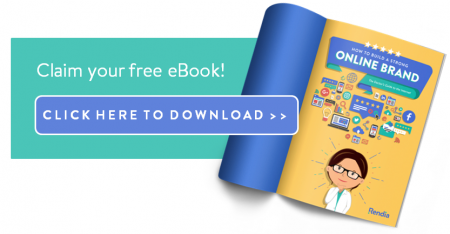Another day, another social media platform? It certainly can seem that way. The latest one that’s creating major buzz is Periscope, a video-streaming platform owned by Twitter that allows users to broadcast live from anywhere with a mobile device. Early adopters include “Tonight Show” host Jimmy Fallon and musician Ringo Starr, but also — perhaps surprisingly — some in the medical field.
Here’s a look into new tools and trends in social media, and how to decide what makes sense for your practice.
Is there any real value?
Some doctors have already jumped on the Periscope bandwagon and are using it for patient education, such as live Q&A’s. Mayo Clinic has experimented with Periscope to provide live coverage and clips from their Social Media Summit. The tool is ideal for that type of event, because it falls into the category of “ephemeral media.” The broadcasts, or “scopes,” provide an interactive, real-time experience for viewers, who can comment and ask questions “on air.” After the live event, the broadcast remains accessible for replay viewing within the app for only 24 hours, unless the broadcaster archives it elsewhere.
Not all doctors are convinced Periscope has worthwhile applications in health care, however. Physician Bryan Vartabedian, who blogs about medicine and technology, writes that while Periscope may be interesting in the way that live-tweeting is, he questions whether it has any real, lasting educational value: “Enduring content that’s searchable and retrievable is where the money is. Live has its place, but I’m concerned that it could be more for visibility than value.”
When visibility is the point
For some doctors, using social media for visibility is exactly the point. Consider Florida plastic surgeon Michael Salzhauer, aka “Dr. Miami,” who broadcasts his operations on Snapchat for thousands of enthusiastic followers. Snapchat is a messaging application that lets users share photos and videos that only last for up to 10 seconds, then disappear. (In case you think this is a sneaky way to avoid HIPAA violations, Dr. Salzhauer only shares videos and photos with his patients’ permission; he says about half of his patients opt in).
Dr. Salzhauer has said that on any given day he has between 50,000 and 75,000 Snapchat viewers from all over the world, in addition to 27,000 Twitter followers and 214,000 followers on Instagram. The amount of people seeking his services has skyrocketed since he launched his social media campaign, he has said. He reportedly has appointments booked all the way through July 2016.
Believe it or not, he doesn’t see his online efforts as a quest for fame or new business, but as a patient engagement strategy: “Social media allows me to express my creativity, to reach out to patients, to connect to them on a human level.”
‘Instagram for doctors’
The tools we’ve discussed above are mainly being used by health care providers to reach patients. However, there is a new social network that is intended specifically for providers. Figure 1, which launched in 2012, has been described as “Instagram for doctors.” Co-founded by Josh Landy, a practicing physician in Toronto, Figure 1 is intended to be a diagnostic and learning tool for doctors seeking advice from their peers. In September, it had surpassed 500,000 users, 90 percent of whom are medical professionals, according to Wired magazine.
The sometimes graphic images generally fall into three categories: someone seeking help with a diagnosis, an image intended to “quiz” viewers on what the diagnosis is, and pictures of “people showing off something crazy,” says Wired.
Figure 1 goes to great lengths to protect privacy. Doctors must obtain patients’ consent before posting photos on the heavily moderated site, and the app automatically obscures faces, identifying details, and removes all metadata. Anyone can create a profile and browse, but only health care professionals are allowed to comment.
A physician assistant in rural Oklahoma told Wired that Figure 1 helped save a patient’s life. When a man presented in the ER with flu-like symptoms and a rash, the app led her to the far more serious diagnosis of shingles meningitis; the incorrect medication could have killed him.
Full participation not required
Most doctors are far too wary — not to mention busy — to start live-broadcasting their daily activities on the Internet. But that doesn’t mean you can’t still reap some of the benefits of the newest trends in social media. For one thing, you can observe other doctors on Periscope, Snapchat, Figure 1, and other platforms to see how they’re using the tools without having to participate yourself. You can also use them purely for educational purposes. But you should at least be aware of them.
As the rate of innovation in health care and technology speeds up, doctors need to keep up or risk falling behind. However, that doesn’t mean you need to become an expert on every new tech trend that comes along.
To find out how you can integrate the right technology into your practice, get in touch with us today.


